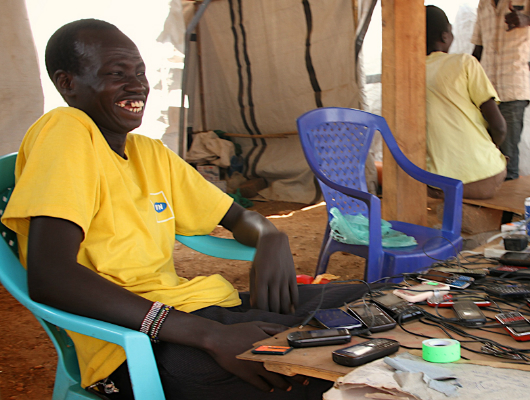Upward Mobility: Four Mobile Technologies in Africa

More people in Africa now have access to mobile phones than to toilets. While that may be a concerning statistic when talking about bio-security, the saturation of cell phones and the ease of data transfer and communication has opened the door to many creative solutions to some of Africa’s most pressing issues.
Humanitarian efforts, from tracking disease to analyzing hate speech, to helping farmers track market prices have all found an unexpected ally in mobile technology. Below are four mobile technologies in Africa that are making a difference.
Pulse Lab, use of telecommunications data to track measles outbreaks
Pulse Lab based out of Kampala, Uganda has found a unique way to predict disease outbreaks in the country, by using mobile phone locations to understand how Ugandans move around. Tracking population movements and aggregation trends can help disease experts predict when and where outbreaks are most likely to occur, as well as how the outbreak may spread around the country. This dramatically increases response time and allows for better overall preparedness.
Umati, monitoring online platforms to track the presence of hate speech
Following the 2007/08 post-election violence in Kenya, some wondered about the role of social media and online communications in catalyzing the violent outburst. The Umati project, started by iHub, an organization dedicated to advancing technological innovation in Africa, seeks to better understand the use of hate speech online. The goal of the project is to understand how hate speech is used online and to develop ways to detect when such vernacular indicates potential violence.
Kudu, using mobile phones to make agricultural markets more effective
The idea behind Kudu was to make agricultural markets more effective by helping farmers find the best buyers and thus the best prices for their goods. Kudu establishes a double auction, where sellers and buyers are connected by a third party, which both can communicate with as simple as sending a text. Buyers and sellers are then matched and the markets are kept stable.
Punya, “Transform a sea of goodwill into actions by linking knowledge, data, and mobility”
Punya cloud architecture aggregates data and mobile applications from numerous humanitarian organizations. The Punya project works to integrate individual applications with as much of the available relevant information as possible. This integration streamlines humanitarian efforts, connecting aid organizers, volunteers and researchers, all in one data cloud. During disaster relief efforts, or when combating disease outbreaks like the ebola epidemic, this streamlining can be a critical edge.
– Gina Lehner
Sources: Punya, Umati, Kudu, Pulse Lab Kampala
Photo: Wikimedia
